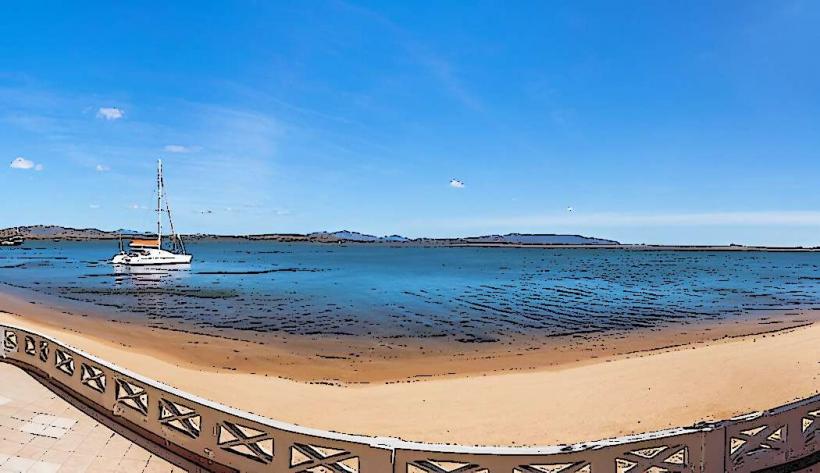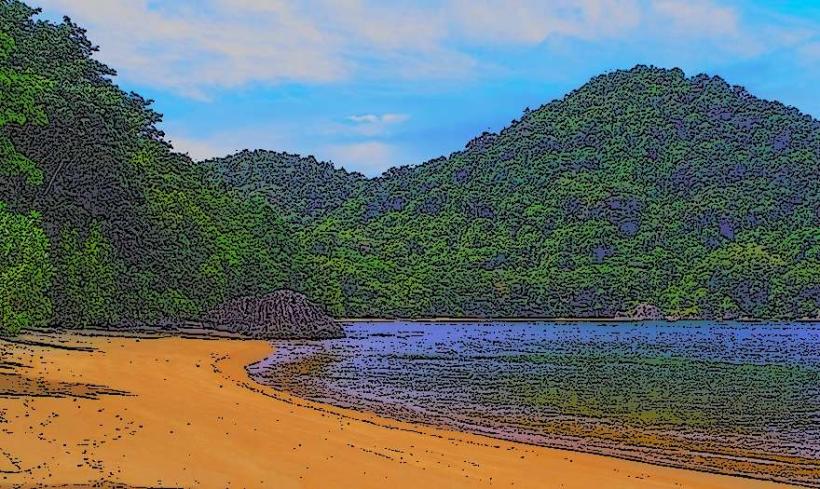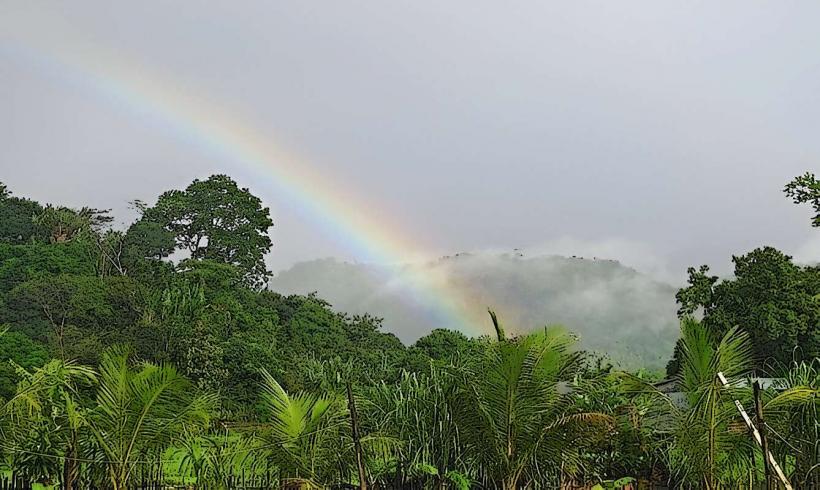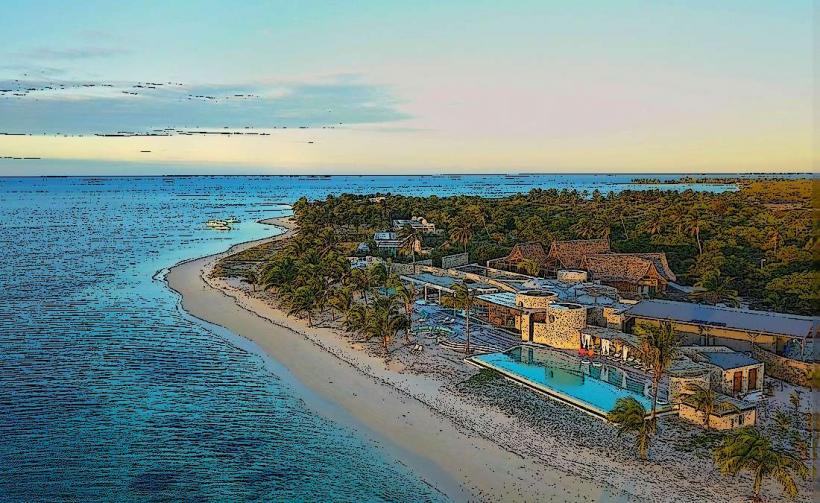Information
Landmark: Masoala National ParkCity: Vohemar
Country: Madagascar
Continent: Africa
Masoala National Park is one of Madagascar's most important and biodiverse protected areas, located on the northeastern tip of the island. The park is situated within the Sava Region, covering approximately 2,300 square kilometers (890 square miles), making it the largest national park in Madagascar. It's known for its rich biodiversity, both on land and in the surrounding waters, and its stunning landscapes that range from rainforests to coral reefs. Here’s a detailed look at Masoala National Park:
Geography and Location:
Masoala National Park is located on the Masoala Peninsula, which extends into the Indian Ocean in northeastern Madagascar. The park is characterized by its diverse ecosystems, including dense rainforests, coastal mangroves, wetlands, and coral reefs. The natural boundary of the park includes a mixture of lowland and montane forests, with some areas rising up to 1,300 meters (4,265 feet) above sea level. This geographical variation makes the park an ecological haven.
Biodiversity:
Masoala National Park is renowned for its exceptionally high biodiversity, both flora and fauna, much of which is endemic to Madagascar. The park is home to a wide variety of plants, animals, and insects, some of which cannot be found anywhere else on the planet.
Flora: The park is home to lush tropical rainforests, mangrove forests, and coastal vegetation. Many of the plant species are endemic to Madagascar, including rare orchids and the famed Madagascar rosewood. The dense vegetation plays a crucial role in supporting the park’s diverse ecosystem.
Fauna: Masoala is one of the most biodiverse places in the world. It is home to:
- Lemurs: Several species of lemurs inhabit the park, including the red-ruffed lemur (Varecia rubra), which is critically endangered and found only in this area. Other lemur species include the aye-aye, the black-and-white ruffed lemur, and the Masoala sportive lemur.
- Birds: The park is a paradise for birdwatchers. It is home to several endemic bird species such as the Madagascar crested ibis, the blue vanga, and the Madagascar pochard.
- Amphibians and Reptiles: The park is also home to various species of frogs, chameleons, and geckos, many of which are found only in this region.
- Marine Life: The coastal waters of Masoala are part of a marine protected area. The coral reefs here are home to a variety of marine species, including sea turtles, rays, and colorful fish. The park also supports a range of marine mammals, including humpback whales, which migrate to these waters to breed.
Ecosystems:
Masoala’s diversity of ecosystems makes it an exceptional natural area to explore. Some of the key ecosystems include:
- Tropical Rainforests: The thick, lush rainforests are home to the majority of the park’s terrestrial wildlife. These forests provide vital habitat for the endangered lemurs and various bird species.
- Mangrove Forests: Found along the coastline, the mangroves of Masoala are important for both terrestrial and marine life. They act as nurseries for many marine species and provide crucial coastal protection.
- Coral Reefs: The reefs off Masoala's coast are among the most pristine in Madagascar. They support a wide range of marine life and are a key part of the park's ecosystem. Activities like snorkeling and diving allow visitors to explore these vibrant underwater environments.
Activities:
Visitors to Masoala National Park can enjoy a variety of eco-tourism activities, all while being immersed in one of the world’s most biodiverse environments. Some popular activities include:
- Hiking and Trekking: Several trails wind through the park, offering opportunities to hike through the dense rainforest and enjoy its stunning landscapes. The trails vary in difficulty, and some lead to remote areas where visitors can spot endemic species.
- Wildlife Watching: Masoala is a haven for wildlife enthusiasts, offering excellent opportunities to spot lemurs, rare birds, and unique reptiles. Guided tours are available to help visitors spot and learn more about the park's wildlife.
- Birdwatching: The park is a top destination for birdwatchers, with numerous endemic bird species to spot.
- Snorkeling and Diving: The coastal areas of Masoala are perfect for snorkeling and scuba diving. The coral reefs and marine life are vibrant and relatively untouched by human activity.
- Kayaking and Canoeing: The rivers and coastal waters around the park are suitable for kayaking and canoeing, offering another way to explore this stunning environment.
Accessibility:
Masoala National Park is relatively remote and can be challenging to access, which is one reason it has remained so well-preserved. The most common way to reach the park is by flying into the town of Maroantsetra, located on the mainland, and then taking a boat to the park. Visitors can also travel via a combination of road and boat, though travel times can be long due to the rugged terrain.
Conservation Efforts:
Masoala National Park is a key focus of conservation efforts in Madagascar. The park is part of the greater Masoala-Makira landscape, a critical area for preserving the island's biodiversity. The local community plays a significant role in conservation through eco-tourism and sustainable resource management. Efforts are ongoing to protect the park's forests, marine ecosystems, and endemic species from the threats of deforestation, illegal logging, and poaching.
Best Time to Visit:
The best time to visit Masoala National Park is during the dry season, from April to November. During this time, rainfall is minimal, and the weather is ideal for hiking and exploring. The wet season (December to March) brings heavy rains, which can make access to the park more difficult and some trails slippery.
Conclusion:
Masoala National Park is an unparalleled destination for nature lovers and wildlife enthusiasts, offering a rich blend of tropical rainforests, coral reefs, and endemic wildlife. Its stunning landscapes and biodiversity make it one of Madagascar’s most treasured natural wonders. Whether you’re hiking through dense rainforests or snorkeling in crystal-clear waters, Masoala provides an immersive experience in one of the world’s most biodiverse ecosystems.






